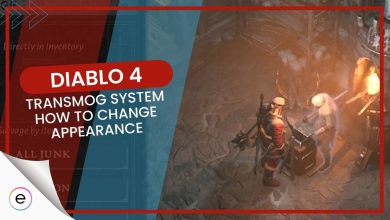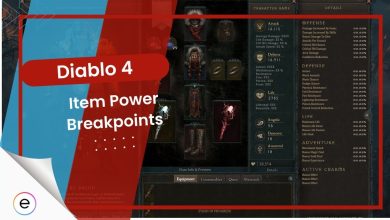In Diablo 4, deciding whether to sell or salvage your loot is a crucial choice. This guide will help you master the balance of gaining gold and crafting materials, ensuring you get the most out of every piece of gear you find.
- Selling items in Diablo 4 provides you with gold, a critical resource for purchasing gear and services like respeccing skills.
- Salvaging items offers to craft materials, essential for upgrading your equipment.
- Salvaging items can also unlock Transmogs, giving you access to more aesthetic options for your gear.
- Gold management is crucial for success in Diablo 4, balancing between selling for gold and salvaging for materials is key.
Early-Game Selling & Salvaging Experience
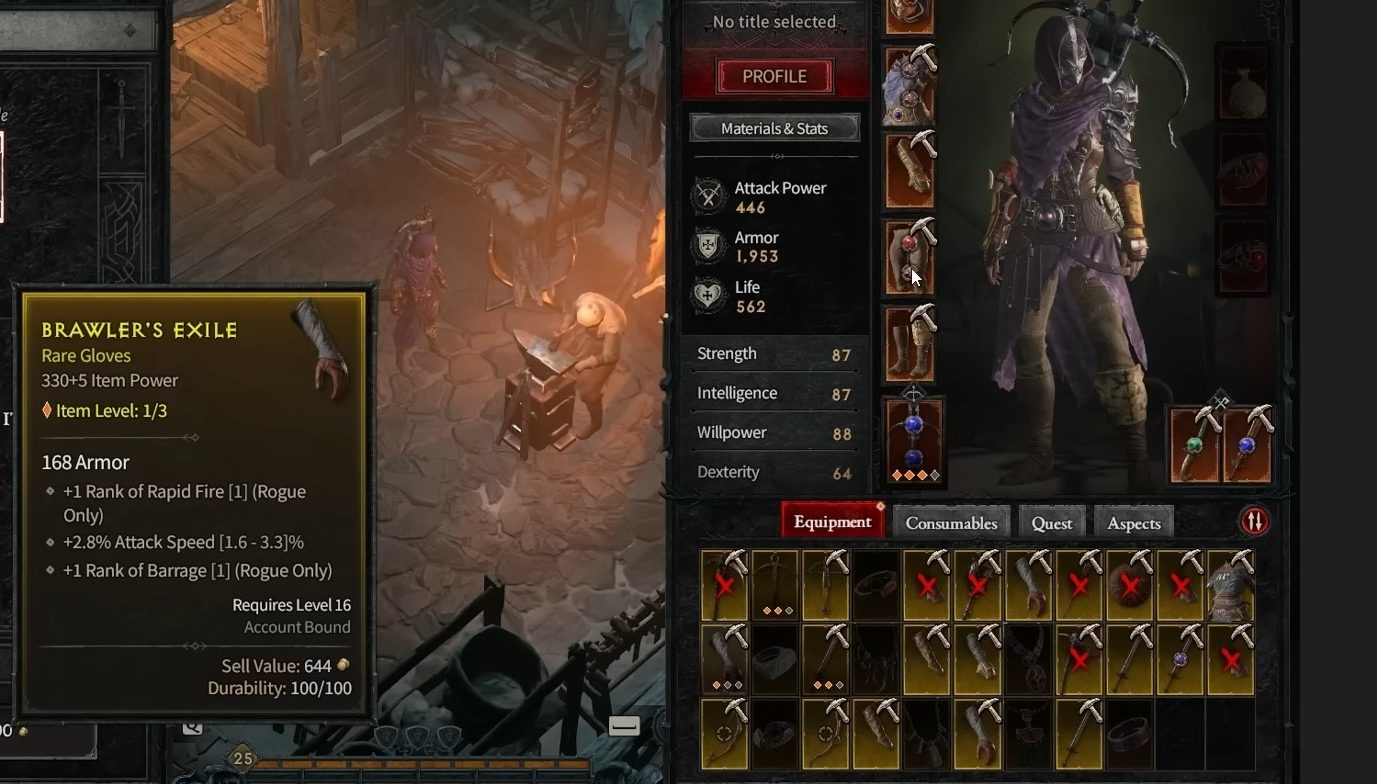
For Diablo 4 beginners, deciding to sell or salvage loot may seem straightforward, but its significance becomes clearer as you progress. Consider your game state: early on, selling gear for gold helps buy better equipment in towns like Kyovashad. Note that you can start upgrading items at level 10, so when you get rare items like Command Work chest armor, think about upgrading them.
Key Considerations:
- Game State: Early on, selling gear is advantageous for gold, especially before level 10. Later, consider the gear type and quality.
- Available Gear and Armor: Keep powerful gear that boosts stats, like Command Work, which enhances all stats and offers high armor.
- Potential Gear Upgrades: Some gear, especially rare or higher rarity items, can be significantly improved through upgrades.
I recommend salvaging when you need materials for upgrades, want new Transmogs, or have low-value gear. Sell when you need gold, lack gear worth upgrading, or prefer a casual gameplay style.
Ultimately, choose the option aligning with your playstyle and goals in Diablo 4.
When to Salvage Gear
Deciding between selling and salvaging in Diablo 4 becomes clearer as you consider your needs and game progress. As you find rarer gear while selling early, Salvaging gains importance and can provide a quick gold boost. Base your decision on your unique playstyle and objectives.
Upgrade Materials
When upgrading equipment in Diablo 4, remember to salvage it first, especially rare or higher rarity items. They are challenging to replace and significantly enhance your abilities when upgraded.
Unlocking Gear Variants for Transmog
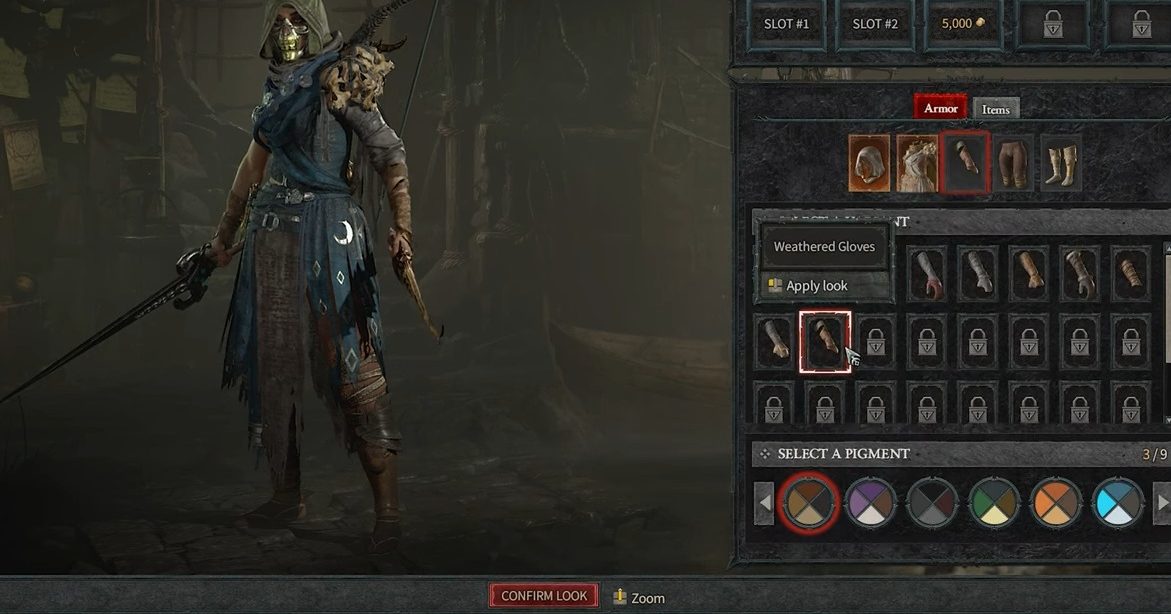
Based on my gameplay experience, salvaging gear in Diablo 4 is essential for transmog unlocks, allowing appearance changes without altering stats. Gear pieces with a hammer icon can unlock new transmogs.
When the gear’s sell value is low (less than 1% of your current gold), consider salvaging for future upgrades.
- Early Game Strategy: Selling gear for gold is wise early on. However, keep rare drops that significantly boost stats and salvage less valuable gear.
- Late Game Strategy: In the late game, prioritize salvaging, especially for legendary gear that yields rare upgrade materials like Coiling Ward and Baleful Fragment. Sell legendary gear without beneficial aspects.
- When To Sell Gear: Decide between selling and salvaging based on your needs and preferences:
- Need For Gold: Sell gear to acquire gold for buying items, enhancing gameplay.
- Lack of Worthwhile Gear: If your gear isn’t worth upgrading, sell it to obtain gold for better gear.
- Casual Gameplay: Players seeking a casual experience may find it easier to sell spare gear and rely on loot drops and vendor purchases.
- Considerations For Common & Magic Rarity Gear: Sell these items in bulk if you are not planning to upgrade. The gold accumulated can fund higher rarity gear or other items.
In summary, selling gear can be beneficial for acquiring gold, especially early on or when lacking worthwhile gear for upgrades. Personal gameplay preferences play a role in the decision between selling and salvaging gear.
Salvage Items
To salvage items effectively, I suggest you locate a Blacksmith, understand the salvage process, and explore automatic salvaging options, simplifying the “Diablo 4 sell or salvage” dilemma.
Where Is Blacksmith?
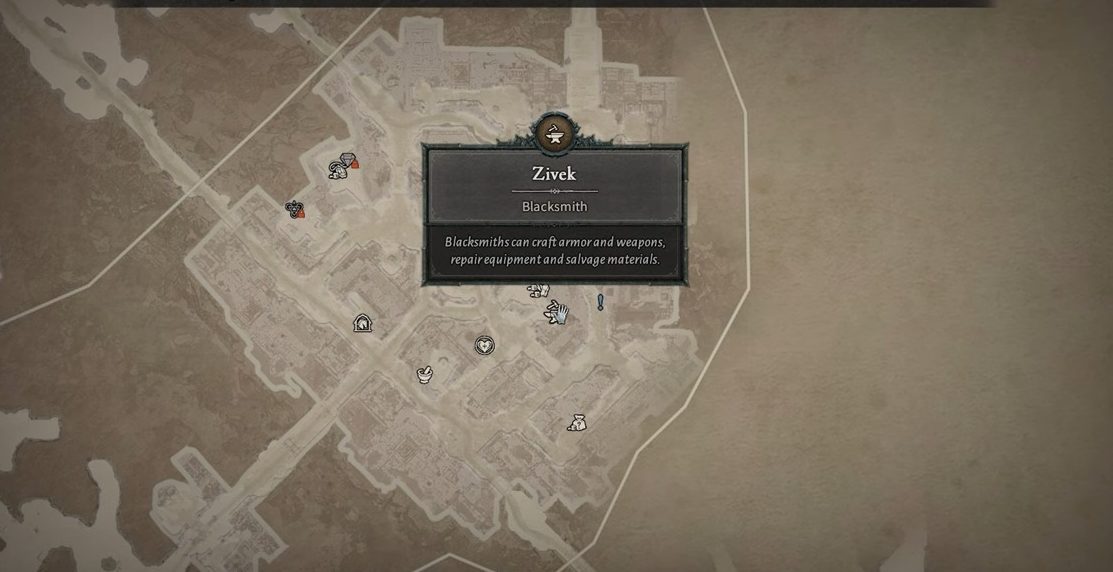
Find the Blacksmith in Kyovashad, Diablo 4’s first major town, using the anvil and hammer symbols. At the Blacksmith, you can sell or salvage your gear. Salvaging gear helps you acquire materials for gear upgrades and unlocking transmogrification variants, especially for gear marked with a hammer icon.
In the late game, prioritize salvaging legendary gear to obtain unique materials like Coiling Ward and Baleful Fragment for upgrading other legendary gear.
Conversely, sell low-value gear when you need gold for other purchases or have no gear to upgrade. Selling spare gear simplifies casual gameplay by eliminating the need for salvaging and gear upgrading.
Automatic Salvaging Options
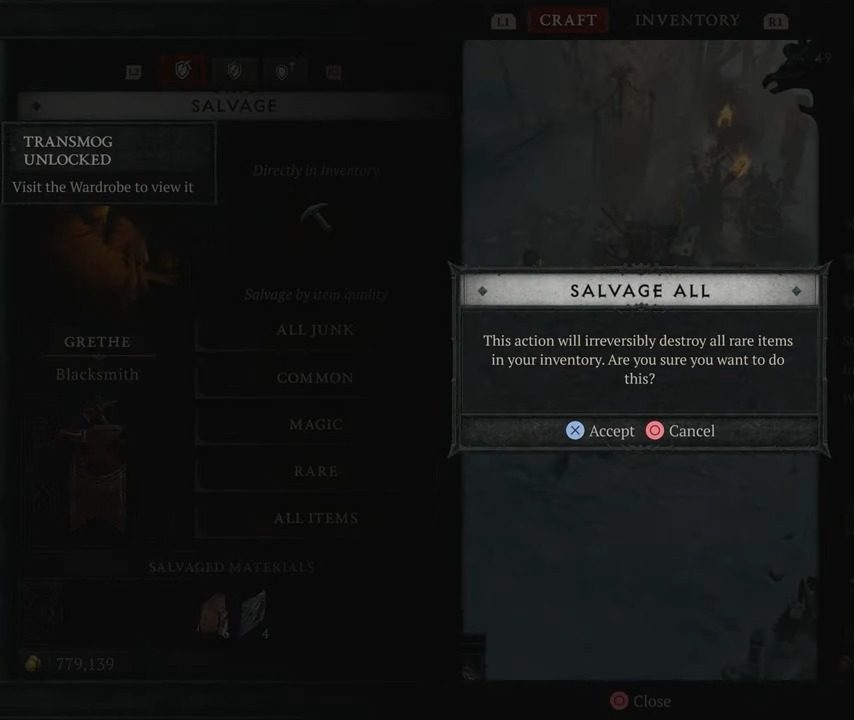
In Diablo 4, an automatic salvaging option for Common, Magic, and Rare gear is available after interacting with the Blacksmith in Kyovashad. To enable it, visit the Blacksmith and choose ‘All Junk’ from the menu to automatically salvage gear during your Sanctuary adventures, saving you time and effort.
Keep in mind that this option only works for newly acquired items. Anything that was in your inventory before you turned on the automatic salvaging will need to be manually salvaged. Finally, note that the automatic salvaging will only provide crafting materials. If you need gold, you will have to sell your gear to the Blacksmith or other vendors in the game.
Manually Salvage Option

I recommend following these steps to salvage your gear at the Blacksmith in Diablo 4:
- Find a Blacksmith. You can typically locate them in the first major town of the game, Kyovashad, by looking for the hammer and anvil icon on the map.
- When you reach the Blacksmith, hover the cursor at the pickaxe.
- Drag and drop this icon onto the gear you want to salvage in your inventory on the right side of the screen.
- Confirm the salvage action. If your gear has a pickaxe icon, this means that salvaging it will unlock a new visual for your wardrobe.
- Collect the materials that are generated from the salvage process.
Remember, you should only salvage gear if you need the materials to upgrade another piece of equipment, the gear has low selling value, or you wish to unlock new visuals for transmogrification.
Unlocking New Visuals
Diablo 4 offers an exciting feature known as “transmogrification.” This allows you to alter the appearance of your gear while retaining its stats. When you salvage gear at the Blacksmith, look for pieces with a hammer icon. These are the ones that can unlock new visuals for your wardrobe when you salvage them.
Once you’ve unlocked a new visual, you can apply it to your gear in any Wardrobe, such as the one in Kyovashad. This allows you to maintain your character’s performance while customizing their look. Salvaging gear is crucial for progress in Diablo 4, providing materials for upgrades and allowing personalization of your character’s appearance. Consider these tips when deciding between selling and salvaging gear in Diablo 4, and may your adventures in Sanctuary be rewarding.
Importance Of Gold & Salvaging

Understanding the value of Gold and the concept of salvaging in Diablo 4 is important. When used wisely, these two components can significantly improve your gaming experience and overall performance in the game.
Role of Gold in Various In-Game Transactions
Gold plays a key role in Diablo 4. It is the primary currency for purchasing gear, upgrades, potions, and even expanding your Stash capacity. It’s used in transactions with various NPCs, including the Blacksmith, Alchemist, and Jeweler. These characters offer important services such as crafting elixirs, upgrading items, and gem crafting, all requiring gold.
If you plan on changing your build, you’ll also need gold to respec your character. So, gold is indispensable whether you’re investing in new gear or seeking to improve your current items.
Benefits Of Salvaging For Crafting, Upgrades & Imprints
Salvaging is crucial in Diablo 4, allowing you to break down items for essential crafting materials needed to upgrade gear or craft new items. These materials play a vital role in enhancing your character’s capabilities.
Moreover, salvaging unlocks Transmogs for each item, enabling you to customize your character’s appearance uniquely. In the early stages, prioritize salvaging to accumulate materials and unlock Transmogs. However, as you progress and discover higher rarity items, carefully weigh the value of materials gained from salvaging against the gold you could obtain from selling.
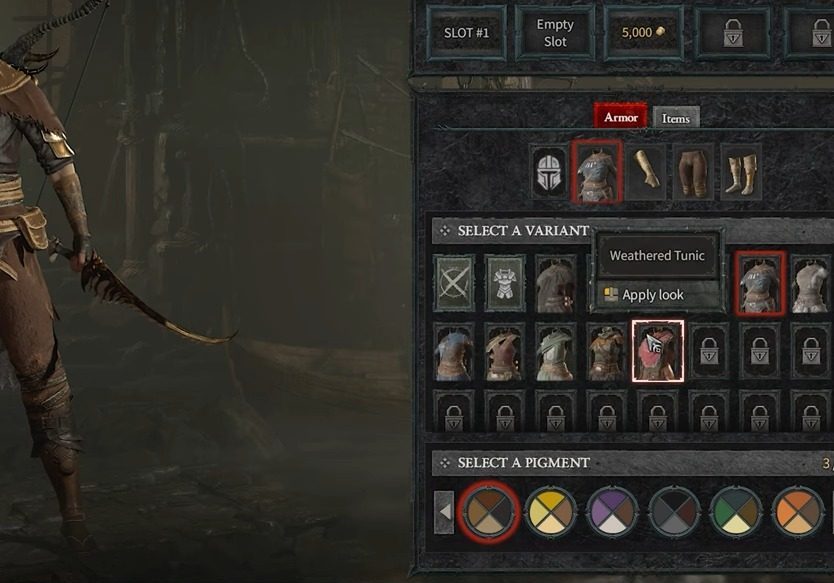
Selling & Salvaging Strategies For Early, Mid & Late Game
In my opinion, deciding whether to sell or salvage gear in Diablo 4 varies throughout the game’s phases. I recommend always considering the gear’s value, your in-game needs, and future plans.
- Early Game: In the early stages, prioritize selling loot for gold to enhance weapons and equipment. Reserve salvaging for valuable gear worth upgrading, especially after reaching level 10 and unlocking Blacksmith upgrades. Avoid salvaging low-value gear.
- Mid-Game: As you encounter irreplaceable gear in the mid-game, focus on salvaging for materials. Salvage gear either for upgrades or when their sell value is low.
- Late Game: In the late game, prioritize resource optimization. For legendary items, evaluate if you need to extract the legendary aspect, salvage for materials, or unlock Transmog. If none apply, sell the legendary item; otherwise, consider salvaging it for upgrading other legendary gear.
Best Gold Management Tips & Tricks

Suggestions For Spending & Saving Gold
- Don’t Overspend in the Early Game: During the early stages of Diablo 4, refrain from spending too much gold. While respecs are inexpensive at lower levels, other expenses can accumulate quickly.
- Wait Until After the Campaign: Hold off on making large purchases until you have completed the campaign. The campaign provides plenty of opportunities for character progression, often making these investments more beneficial than any early-game item or aspect craft.
- Sell High-Value Items: When you need to make a quick cash infusion, sell items of significant value. Keep the lower-valued items for salvaging.
Managing Crafting Materials
- Salvage Early, Sell Later: During the campaign, salvage Normal, Magic, and Rare items. This will provide enough materials for your first early-game upgrades. Once you finish the campaign, start selling these items, as end-game content will yield a lot more of them.
- Don’t Upgrade All Your Gear: Try to avoid using your crafting materials to upgrade all your gear to the maximum level during the campaign. You’ll likely switch out items regularly, so those crafting materials would quickly go to waste. It’s okay to upgrade weapons, though, as they provide a decent damage boost early on.
Advice For Upgrading Gear & Dealing Occultist
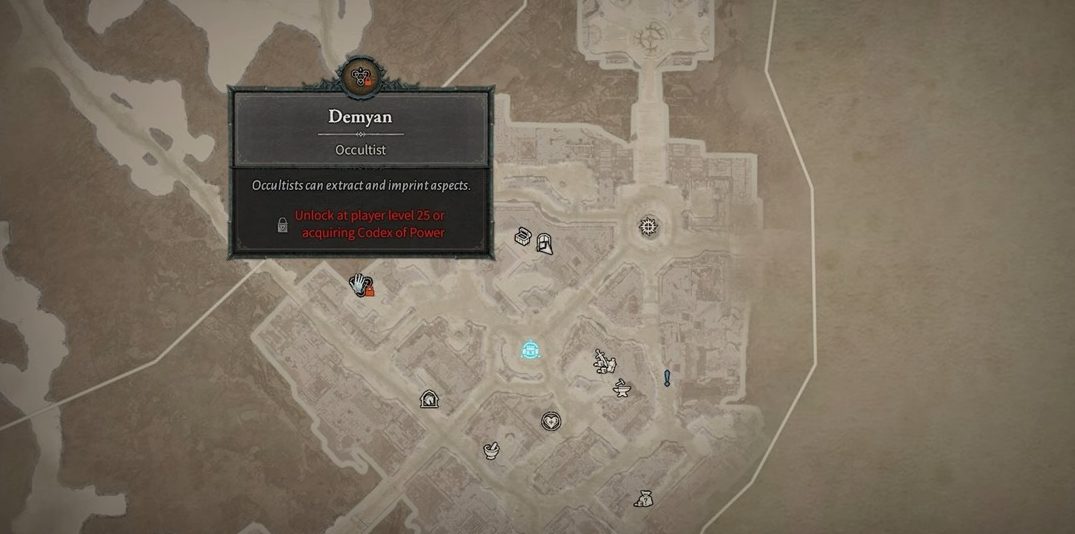
- Be Careful with the Occultist: Crafting at the Occultist gets very expensive very quickly, so limit your business with the Occultist to imprinting powerful leveling aspects. Extracting aspects can be done later, so stash away all Legendaries you’d like to keep early on.
- Don’t Reroll During the Campaign: Rerolling your best item affixes at the Occultist during the campaign isn’t worth the cost.
Recommendations For Legendaries & Uniques
- Salvage Legendaries Early On: Salvaging Legendaries and Uniques early in the game is often more valuable than selling them. You’ll need plenty of Coiling Ward, Abstruse Sigil, and Baleful Fragment to upgrade your Legendary and Unique items later, and these crafting materials only come from salvaging Legendaries and Uniques.
- Sell Useless Legendaries and Uniques: Legendaries with useless aspects and Uniques that don’t fit your build can be sold for a lot of gold. Just make sure you won’t want to use those powerful items later before selling them.
That is pretty much everything I had to entail in the Diablo 4 sell or salvage guide. I have given you a full story of the best course of action during the early, mid & late games. Also, I have listed my opinion and how you should handle the sell or salvage items situation. I suppose all of this information should suffice in making decisions from the get-go in Diablo 4.
Before you leave the page, you must visit Diablo 4 How To Get Wolf Pet, All Waypoint Locations, and Murmuring Obols guides.
Next:
- Diablo 4: How To Get Whispering Keys
- Diablo 4: How To Get The Fiend Rose
- Diablo 4: How To Summon Golems
- Diablo 4: How To Get Spectral Charge Mount
Thanks! Do share your feedback with us. ⚡
How can we make this post better? Your help would be appreciated. ✍
